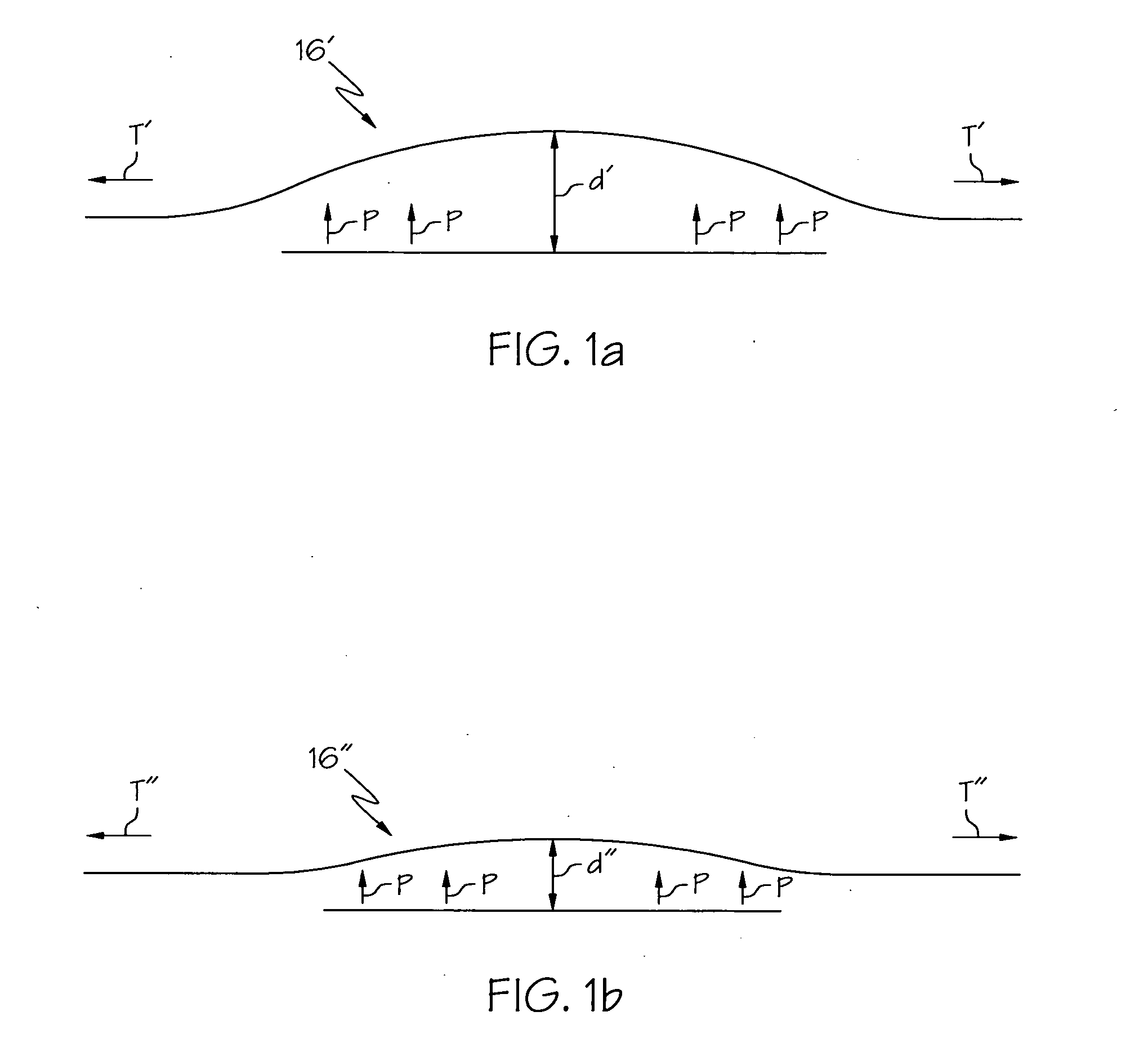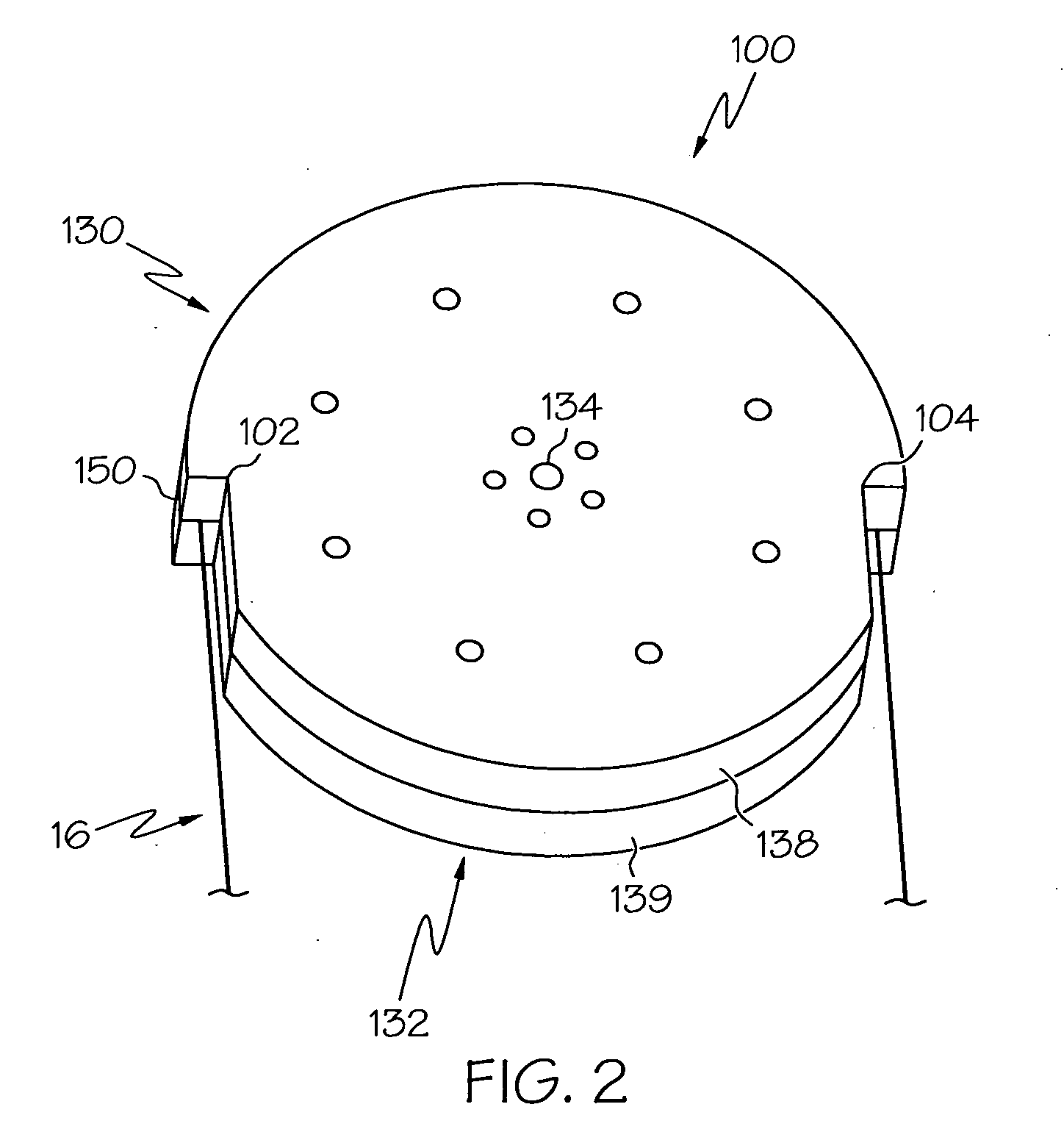Methods for measuring the tension of optical fibers during manufacture
a technology of tension measurement and manufacturing method, which is applied in the direction of lighting and heating apparatus, instruments, furniture, etc., can solve the problems of costly process downtime, adverse effects on optical fiber properties, damage to optical fibers,
- Summary
- Abstract
- Description
- Claims
- Application Information
AI Technical Summary
Benefits of technology
Problems solved by technology
Method used
Image
Examples
Embodiment Construction
[0019]The methods described herein relate to the manufacture of optical fibers and, more specifically, to non-contact methods for measuring the tension applied to an optical fiber during a fiber drawing process. The method, schematically shown in FIGS. 1A and 1B, may comprise applying a pressurized fluid to the optical fiber to displace the optical fiber. The position of the optical fiber resulting from the application of the applied pressurized fluid is then used to determine the tension applied to the optical fiber based on a predetermined relationship between displacement and applied draw tensions for a particular pressure and / or a particular flow rate of applied pressurized fluid. FIGS. 2 and 3 illustrate one embodiment of a fluid bearing which may be used in conjunction with the methods described herein to measure the tension of an optical fiber during the fiber drawing process. The fluid bearing may generally comprise a fiber support channel. The fluid bearing may also contain...
PUM
| Property | Measurement | Unit |
|---|---|---|
| outer diameter | aaaaa | aaaaa |
| outer diameter | aaaaa | aaaaa |
| outer diameter | aaaaa | aaaaa |
Abstract
Description
Claims
Application Information
 Login to View More
Login to View More - R&D
- Intellectual Property
- Life Sciences
- Materials
- Tech Scout
- Unparalleled Data Quality
- Higher Quality Content
- 60% Fewer Hallucinations
Browse by: Latest US Patents, China's latest patents, Technical Efficacy Thesaurus, Application Domain, Technology Topic, Popular Technical Reports.
© 2025 PatSnap. All rights reserved.Legal|Privacy policy|Modern Slavery Act Transparency Statement|Sitemap|About US| Contact US: help@patsnap.com



